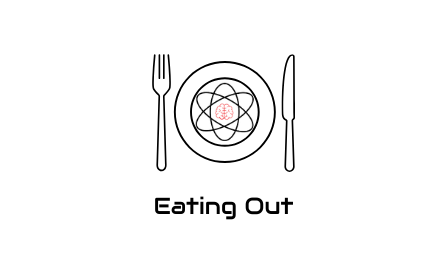How to Make the Right Nutritional Choices?
Studio Fit U
Nutrition
Published: 28/11/2022
Update: 28/01/2025

Start on the right foot
How can you make the right nutritional choices?
*It is important to understand that we are neither doctors nor nutritionists. The information we provide is based on our personal experiences, studies and experiences as personal trainers. Any recommendations we make regarding nutrition and supplements should be discussed between you and your doctor, as there may be risks involved. The information in this guide does not replace professional medical advice.
Proper nutrition is crucial to your results in the gym. It can seem complicated, but our personal trainers will make it simple for you. Here are some key concepts to understand:
Macronutrients
Macronutrients are elements that provide energy to the body in the form of calories.
1. Carbohydrates:
Carbohydrates being our primary source of energy, its main role is to ensure that it is supplied to all our cells. There are 3 categories, simple carbohydrates, complex carbohydrates and fibre.
- Simple carbohydrates are quickly detected and assimilated by our taste buds. We find this form in fruits, desserts, drinks, etc.
- Complex carbohydrates (CARBS) get their name from the complexity of their chemical arrangement. We find this form in cereal products, potatoes, corn and legumes.
- Fibres are non-assimilable carbohydrates. They help digestion and repel hunger (satiety). We find this form in fruits and vegetables, whole grain cereals, legumes, nuts and seeds.
2. Proteins:
Proteins are essential nutrients made up of amino acids. Proteins have several roles, but we will settle for one, muscle repair. We find proteins in eggs, meat, fish, etc.
3. Lipids:
Lipids, or fats, are the macronutrients that provide the most energy.
In addition to providing the calories necessary for the
functioning of cells, lipids have a role to play in the
nervous system. We find lipids in oil, margarine,
avocados, meats, fish, etc.
How to Calculate your Macronutrients and Portions
Practicing portion control will help you achieve your health goals and reduce bad habits. It may seem logical, but the larger your portions, the more food you are likely to ingest. Eating can be a very subconscious habit, so you don't always know how much you're consuming. In order to maintain or reach your weight loss goals, here is the ratio of your macronutrients:
- - Protein 10-35%
- - Carbohydrates 45-65%
- - Lipids 20-35%
This ratio can change depending on the diet you follow and your goals. Once your calorie intake has been determined with your professional, it will be easy for you to calculate the amount of each macronutrient. The average calorie intake for a man is 2500 calories per day and 2000 calories per day for women.
- - 4 calories/gram of carbohydrates
- - 4 calories/gram of protein
- - 9 calories/gram of fat
Depending on your goals, you will need to create a caloric deficit or surplus. To gain or lose 0.5-1 pound per week, you will need a surplus or deficit of approximately 250-500 calories per day, which can be achieved by modifying your nutrition and activity levels.
Key Points to Remember
All macronutrients can make you gain or lose weight, the most important factor is the portion of each. They are ALL essential and each play a role in your fitness or weight loss journey. Depending on your goals, some choices will be more judicious than others, because at the end of the day they will balance your caloric intake.
In addition, it will be important to monitor your energy expenditure during your physical activities. This depends on several factors such as the type of activity you perform, your gender and your age.
Let's take an average number of energy expenditure (375 cal/hour) for training in the gym. This should be taken into consideration when calculating your caloric intake for the day.
A person wishing to gain muscle mass will have to add this expenditure to their daily calorie intake (+375 calories) in order to avoid a calorie deficit. A person wishing to lose weight will have to subtract it from their total calories (-375 calories) in order to avoid a caloric surplus.
Tips
2 ½ ounces (75 g) of meat, poultry or fish, or ½ cup (125 ml) = the palm of your hand.- 2 tbsp. (30 ml) peanut or almond butter = 2 inches stuck together or a golf ball.
- ¼ cup (60 ml) of nuts or seeds = the palm of your hand or 2 golf balls.
- ¾ cup (175 ml) of legumes = 1 fist or a tennis ball.
- ¾ cup (175 ml) or 175 g of tofu = 1 fist or a tennis ball.
- 1 cup (250 ml) of milk or soy beverage = 1 fist or a baseball.
- ¾ cup (175 g) of yogurt or kefir = 1 fist or a tennis ball.
- ½ cup of rice or pasta = ½ fist or a hockey puck.
- ¾ cup (175 ml) of hot cereal = 1 fist or a tennis ball.
- 1 serving (30 g) of cold cereal = 1 fist.
- ½ cup (125 ml) of fresh, frozen, leafy or canned vegetables = ½ fist or a hockey puck.
- ¼ cup (60 ml) of dried fruit = the palm of your hand or 2 golf balls
- ½ cup (125 ml) fruit juice = ½ fist
In the same category


Avoid These 4 Common Nutrition Mistakes If You Want to Lose Fat and Build Muscle Faster
Nutrition
Learn more
STUDIO

Personal & Personalized Training
MONTREAL
4824 Ch. de la Côte-des-Neiges, Montréal, QC H3V 1G4